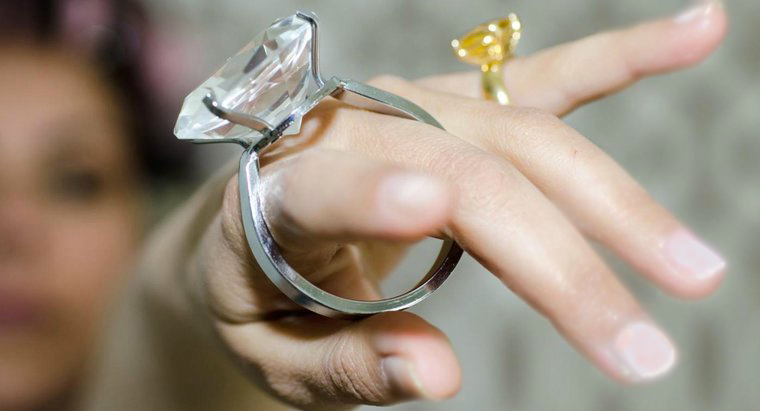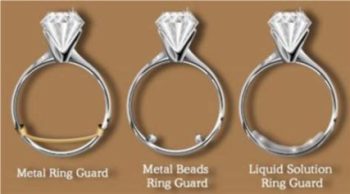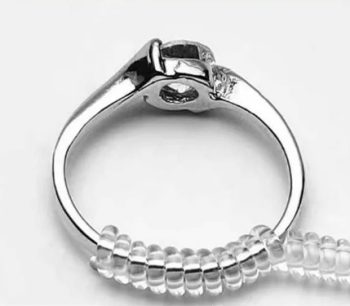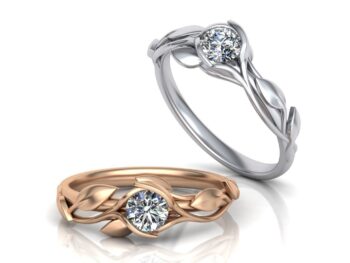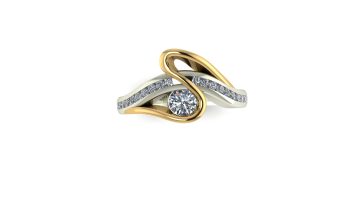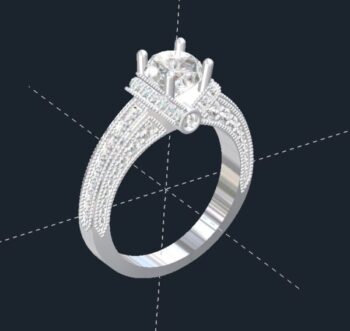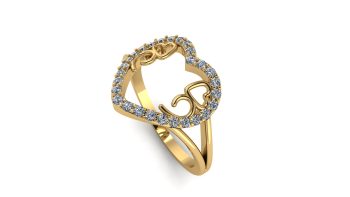We have many customers who worry too much about Resizing A Ring. They think it is a major repair and would rather not do it. But it isn’t. And you shouldn’t be afraid of having it done. However, there are options besides cutting into your ring that will work almost or just as well. There needs to be because there are a few ring styles out there that are impossible or very difficult to resize. Many will just not wear something or suffer the tightness or looseness rather than address the problem. Hopefully, after reading this post, you will get your ring wearable again.
Does Your Ring Fit One Day & Not The Next?
There can be several reasons why your ring may fit one day and not the next. One possibility is that your finger size can fluctuate due to various factors such as temperature, humidity, and water retention. Changes in these conditions can cause your fingers to swell or shrink, affecting the fit of your ring.
Another reason could be weight fluctuations. If you have gained or lost weight, it can impact the size of your fingers and consequently, the fit of your ring. Lastly, it’s worth considering that the design and style of the ring itself can also influence how it fits. Some rings may have a more snug or loose fit depending on their design. It’s always a good idea to consult with a jeweler if you’re experiencing consistent issues with the fit of your ring. They can help determine the best solution, such as resizing or adjusting the ring, to ensure a comfortable fit.
The first step is to determine the cause. Did you lose weight? Do you plan on keeping it off? Does it only happen during certain times of the year? Second, decide whether or not you need a permanent solution. If your finger swells ever summer, then you don’t need a permanent solution like resizing a ring.

How Is a Ring Resized?
When it comes to the standard resizing of a ring, there are a few important steps to consider. First, you’ll need to find a reputable jeweler who specializes in jewelry repair. They will be able to assess the ring and determine the best method for resizing it. Once the jeweler has determined the appropriate size adjustment, they will carefully cut the ring and either add or remove metal as needed. Finally, the ring will be polished and finished to ensure a seamless appearance. It’s important to note that resizing a ring can take time, so it’s best to plan ahead if you have a specific deadline in mind. Overall, working with a skilled jeweler is key to ensuring a successful and well-fitted ring resizing process.
Ring resizing costs can vary depending on several factors. The price typically ranges from $50 to $100, but it can be higher for more intricate, heavy, or delicate rings. Metals like silver are easier and less expensive to resize. It’s important to note that these prices are just estimates and can vary depending on the jeweler and the specific ring.
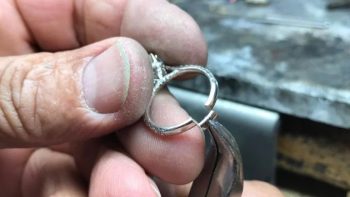
When Resizing A Ring Is Worth It
Resizing a ring can be a worthwhile investment. Whether it’s due to weight loss or gain, or simply wanting to wear a ring on a different finger, a resize allows you to continue enjoying your favorite piece of jewelry. It’s important to consult with a professional jeweler who can accurately measure your finger and make the necessary adjustments. While a resize may incur some cost, the benefits of a properly fitting ring make it worth it in the long run. Don’t let a ring that doesn’t fit properly gather dust in your jewelry box – consider resizing it and enjoy wearing it again. Especially if a permanent change to the ring size will make the custom ring wearable again.
When Not To Resize A Ring
Resizing a ring is a common solution when it no longer fits properly. However, there are certain situations when resizing may not be the best option. One such situation is when the ring has sentimental value or is an heirloom piece. Resizing can alter the original design or damage delicate engravings, diminishing its sentimental worth.
If your ring doesn’t fit due to weather or salt intake, it will still not fit all the time if you resize it. Another instance is when the ring is made of materials that are difficult or impossible to resize, such as tungsten or titanium. In these cases, it is advisable to explore alternative options, such as using ring sizers or wearing the ring on a different finger. Ultimately, it is important to consider the unique characteristics of the ring and consult with a professional jeweler before deciding whether or not to resize.
Other Ring Resizing Options
- Ring Sizing Beads – Ring sizing beads are small metal or plastic beads that are inserted into the inside of a ring band to adjust its size. They are commonly used to make a ring smaller, allowing it to fit more comfortably on the finger. These beads can be easily added or removed by a jeweler. This makes them a convenient solution for individuals whose ring size fluctuates or for those who have inherited a ring that is too large. By adding ring sizing beads, the ring can be securely worn without the fear of it slipping off or spinning around the finger.
They also have ring guards and plastic polymer solutions that will make a ring smaller. These guards and liquid solutions can be found on Amazon or anywhere like that.

- Ring Spacers – Ring spacers are small devices that can be used to adjust the size of a ring. They are typically made of metal and come in various sizes to accommodate different ring sizes. To use a ring spacer, simply slide it onto the ring band and position it where it is needed. The spacer will fill the gap between the ring and the finger, making the ring snugger. Conversely, if the ring is too tight, the spacer can be placed on the inside of the ring to create more room.

- Ring Stacking – Stacking a larger or smaller ring next to it can provide a simple solution. By doing so, you can adjust the size and ensure a better fit. This technique works because the additional ring acts as a buffer, filling the gap between the ill-fitting ring and the finger. Whether it’s a larger ring to make the original fit snugly or a smaller ring to reduce the size, this method allows for flexibility and comfort.
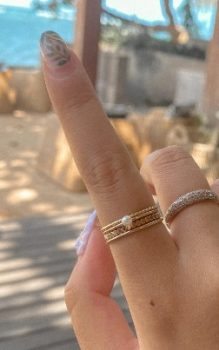
Laser Resizing
Laser ring resizing is a process that uses laser technology to alter the size of a ring without traditional methods to resize. It is a non-invasive process that involves using a laser beam to heat and expand the metal in the ring. This allows it to be stretched or compressed as needed. The laser is carefully controlled to ensure precision and avoid any damage to the ring. This method is particularly useful for resizing rings with intricate details or gemstones. This minimizes the risk of causing any harm to these delicate elements.
Laser ring resizing allows for accurate resizing without damaging the ring’s structure or aesthetics. It is a popular choice for individuals who need their rings resized quickly and with minimal disruption. However, the machines are very expensive and most jewelers probably won’t have one. So, if you live in an area without a lot of jewelers, this method probably won’t work. Laser sizing can also cost twice as much as standard resizing.
The Bottom Line
Ring resizing is a common service offered by jewelers. It allows individuals to adjust the size of their rings to ensure a comfortable fit. Whether you need to make a ring smaller or larger, a resize can be a simple and effective solution. However, it’s important to understand the process and potential limitations before proceeding.
When resizing a ring, a skilled jeweler will carefully manipulate the metal to achieve the desired size. For rings that need to be made smaller, the jeweler will typically cut a small section out of the band and then rejoin the ends. This process ensures a seamless appearance and maintains the integrity of the ring. On the other hand, if a ring needs to be made larger, the jeweler will add extra metal to the band. This ensures a secure and comfortable fit.
It’s worth noting that not all rings can be resized. Some rings, such as those with intricate designs or gemstones that extend around the entire band, may be more difficult or impossible to resize without compromising the overall appearance. Additionally, certain metals, such as tungsten or titanium, may be more challenging to resize due to their unique properties.
